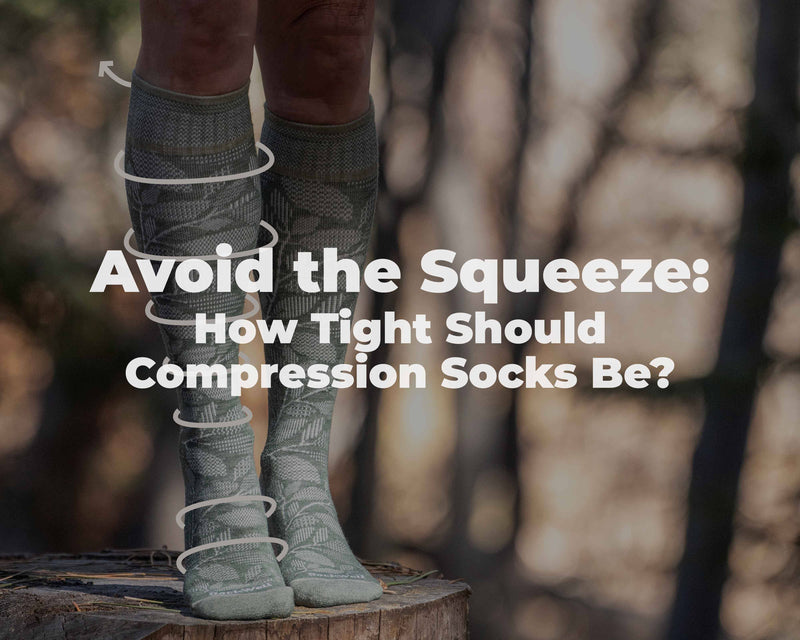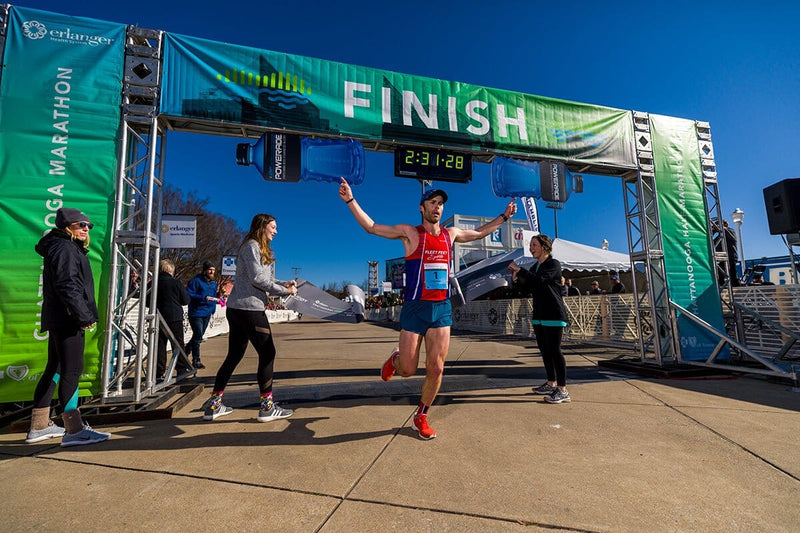
There’s a fine line between helpful pressure and discomfort when it comes to compression socks. If you’ve ever asked yourself, “Am I supposed to feel this much squeeze?”—you’re not alone. The trick is finding that just-right fit that offers support without leaving marks. Keep reading as we explore how tight compression socks should be to keep your legs happy.
Key Takeaways
-
Compression socks support your legs with steady pressure that reduces swelling, improves circulation, and fights fatigue from daily activity.
-
Different compression levels (moderate and firm) are designed for varying needs, from everyday use to post-surgery recovery.
-
From toe tingling to sagging socks, discomfort or lack of support are clear signs your compression socks aren't the right fit.
-
A good fit means your socks are tight enough to energize your legs, but not so tight that they leave red marks or make your toes go numb.
-
To get the right compression sock fit, measure your ankle, calf, and thigh in the morning, then match those numbers to a sizing chart for optimal support.
What Compression Socks Actually Do
Compression socks are designed to support your legs, improve how they feel, and keep you going strong from morning to night. Here’s how they work:
-
Provides gentle pressure to help blood flow: Compression socks apply gentle pressure that helps your blood flow upward, easing tired legs after long hours on your feet.
-
Reduces swelling and discomfort: By keeping fluid buildup in check, compression socks reduce the swelling that tends to sneak in during the day.
-
Supports veins and tired legs: From long work shifts to cross-country flights, compression socks help your legs feel less drained and better supported.
Compression Levels And What They Feel Like
Compression socks come in various levels of tightness, offering different benefits for your leg health. Understanding these levels helps you choose the right fit for your needs.
Moderate Compression (15-20 mmHg)
Moderate compression is where things get serious yet comfy. This is a common over-the-counter option and works wonders for first-time wearers. It prevents swelling and can reduce the risk of deep vein thrombosis (DVT), especially during long flights or extended periods of sitting. Think of it as your go-to choice for travel or busy workdays—providing a supportive boost for those hardworking legs!
Firm Compression (20-30 mmHg)
Firm compression really steps up the support. It's often recommended post-surgery or for those dealing with moderate to severe conditions. Firm socks assist in managing lymphedema or preventing orthostatic hypotension. The snug fit keeps your blood flowing efficiently and helps reduce discomfort during physical activities. If you’re tackling a workout or simply on your feet a lot, this level offers the firmness needed to keep you moving without the drag.
Signs Your Compression Socks Are Too Tight (Or Too Loose)
Finding the right fit in compression socks is crucial for enjoying their benefits. Here’s how to spot if they’re too tight or too loose.
Too Tight If
-
You feel pain or tingling: Snug is good, but if you’re feeling pain or can’t wiggle your toes comfortably, it’s time to size up.
-
Deep marks or red patches appear: Lingering red lines or pressure spots after removing your socks? That means they’re squeezing more than they should.
-
Toes become cold or discolored: Blue, white, or fiery red toes mean one thing: your socks are squeezing too much, and your circulation needs a break.
Too Loose If
-
They slide down: When your socks can’t hold their position, they’re not helping much, so consider trying a smaller size.
-
No pressure felt at the ankle: If your ankles aren’t feeling any pressure, your socks might be too loose to do their job.
-
They wrinkle or bunch at the knees: Bunching at the knees is a clue that your socks aren’t snug enough to give you the support you’re looking for.
How Tight Should Compression Socks Be?
Getting the right fit with compression socks is all about balance. They should support your legs and boost circulation without feeling like a tourniquet. So, how tight is just right?
Should Feel Snug and Supportive
Your compression socks should feel snug, like a gentle hug, but not like they're trying to squeeze the life out of you. This supportive sensation helps reduce fatigue and promotes blood flow, keeping your legs feeling refreshed for longer. It's all about balance—snug is good, overly tight is not.
Should Not Feel Painful or Leave Deep Red Marks
If you notice any discomfort, pain, or deep red marks after wearing your socks, they may be too tight. These signs suggest the socks are pressing down too hard on your skin and compromising comfort. Compression is meant to alleviate discomfort, not create it. Give your legs a break and try a different size or compression level.
Should Not Cut Off Circulation
Compression socks should never cut off your circulation. If your toes feel cold or tingly, or if you notice swelling or numbness, that’s a clear signal that your socks are too tight. Healthy blood flow is vital, so select a level of compression that supports your legs without restricting circulation.
You Should be Able to Move Your Toes Freely
Freedom of movement matters. You should easily wiggle your toes while wearing compression socks. If moving feels like a chore, it's time to reconsider your choice. Properly fitting socks allow for movement while remaining supportive. Think of your toes as little dancers—don’t confine their rhythm!
Should Feel Slightly Firmer at the Ankle, Gentler as They Go Up the Leg
Compression socks usually feel firmer at the ankle and gradually ease up as they move up your leg. This graduated compression design supports your circulation by promoting proper blood flow back to your heart. If your socks feel the same at both the ankle and calf, they might be too tight. Enjoy that subtle squeeze at the ankle while letting the rest of your leg breathe a little.
How To Measure For The Right Fit
Compression socks work best when they fit just right. Use this sizing chart to find the perfect size of Sockwells—No tape measure needed!
Sizing Chart
Sizing charts are your best friend when picking compression socks. They help you avoid socks that are too tight or too loose by guiding you to the perfect fit. A good fit means better support, better results, and a better day.
To Wrap Up
The magic of compression socks lies in finding the perfect balance: snug, supportive, and never too tight. A proper fit means better circulation, less fatigue, and legs that feel ready for anything. Don’t ignore signs of poor fit—your body will let you know. With a little trial and error, you'll land on the pair that keeps your steps light and your day smoother. And once you do, you might wonder how you ever went without them.
Support should never come at the cost of comfort. Sockwell compression socks are made with a breathable Merino wool blend and are designed to deliver balanced, effective pressure. With various compression levels and inclusive sizing, there’s a pair made to fit just how it should—snug, never restrictive. Say yes to energized legs, improved blood flow, and all-day comfort. Shop at Sockwell now and give your feet the care they deserve.



